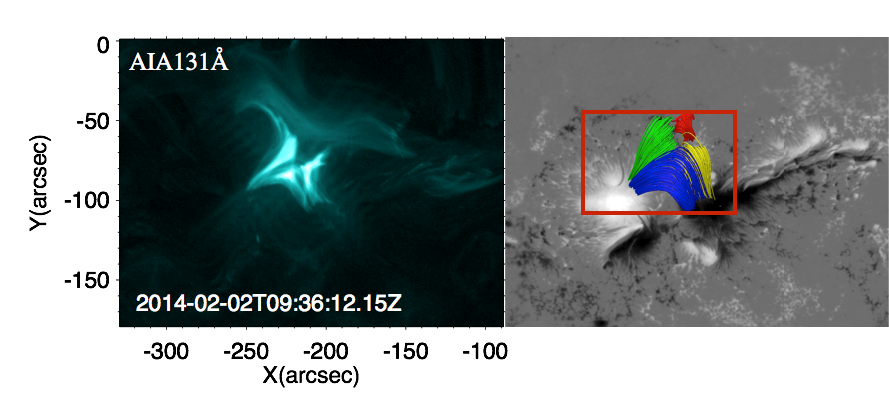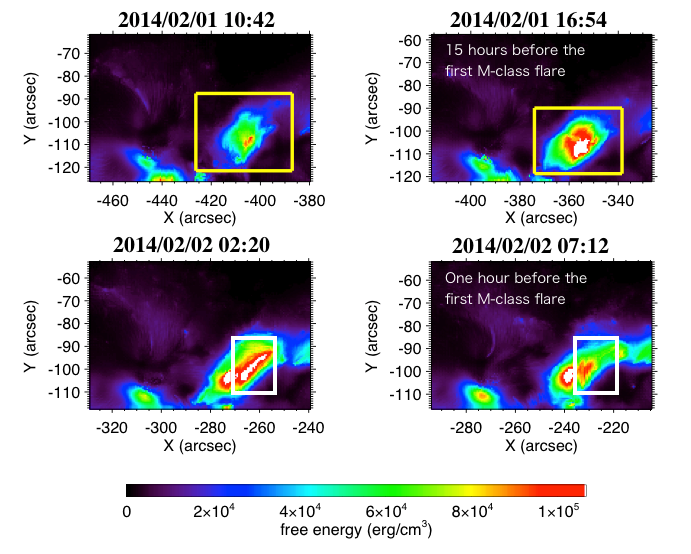Yusuke Kawabata (ISAS/JAXA)
Solar flares are known as explosive magnetic energy release events in the solar corona. The excess energy from the potential (minimum energy) magnetic field configuration, which is called free energy, is used partially during solar flares. To understand the process of the occurrence of solar flares, it is important to know when, where, and how the free energy is stored in the corona. In terms of observations, we can measure magnetic fields only at the photospheric layers with reliable accuracy. Solar flares are often observed in the complex three-dimensional (3D) magnetic field configuration, such as a quadrupole configuration rather than a simple bipole configuration. Based on the Hinode/SP and SDO/HMI measurements of photospheric magnetic field distribution, we studied the 3D magnetic field structure in the quadrupole active region, NOAA 11967, where series of three M-class flares were produced on February 2, 2014 (Figure 1). The coronal magnetic field was extrapolated from the magnetic field measured at the photosphere, on the assumption that the Lorentz force is dominant in the solar corona. This extrapolation technique is called nonlinear force-free field (NLFFF) modeling. We applied the NLFFF modeling to time series of the photospheric magnetic field maps for the quadrupole active region. With the derived 3D magnetic field data, we investigated the temporal evolution of the free energy distribution as shown in Figure 2. We found that sufficient free energy had already been stored in a localized region (enclosed by yellow rectangle in Figure 2) at least 10 hours before the onset of the first M-class flare. Moreover, just before the occurrence of the first M-class flare, a part of free energy decreased as shown by white rectangle in Figure 2. This result implies that the small energy release events behaved as a precursor before the solar flare. This may give a disturbance to the equilibrium in the entire quadrupole system, leading to the occurrence of the flare.
Y. Kawabata, S. Inoue, and T. Shimizu, “Non-potential Field Formation in the X-shaped Quadrupole Magnetic Field Configuration”, The Astrophysical Journal, 842, 106, 2017
http://iopscience.iop.org/article/10.3847/1538-4357/aa71a0/meta

Figure 1:(Left) The extreme ultraviolet image of AR 11967 observed with Solar Dynamics Observatory. (Right) Vertical magnetic field distribution in the photosphere (grayscale). The coronal magnetic field lines derived by NLFFF modeling (solid lines). The red rectangle shows the field of view of Figure 2.

Figure 2: The temporal evolution of free energy distribution. The free energy is averaged along the vertical direction. The free energy increased in the yellow rectangle and decreased in the white rectangle.
